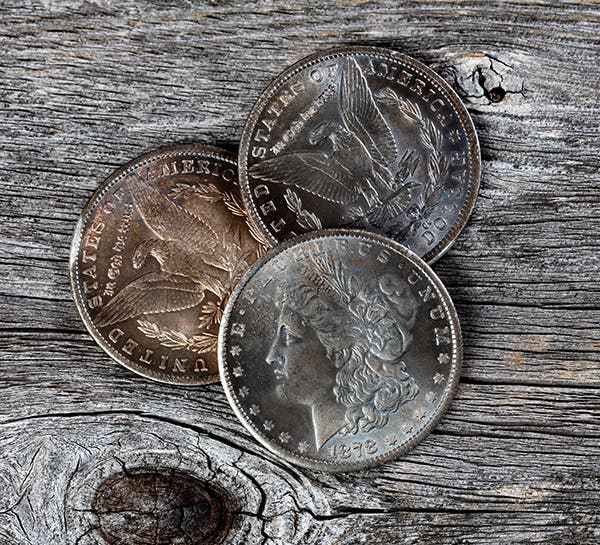Coin Clinic: Amero a private issue
Has anyone ever produced prototype coins for a possible currency union between Canada, Mexico, and the United States?
By Richard Giedroyc
Has anyone ever produced prototype coins for a possible currency union between Canada, Mexico, and the United States?
Officially, no, but Amero medals issued privately by coin designer Daniel Carr (2001 New York and Rhode Island quarter reverse designer) carry the legend “Union of North America” and his “DC” company logo on the reverse. These have been issued in precious metal composition in increments from one to 1,000 ‘denominations’ since 2005. Former Internet radio talk show personality Hal Turner posted an article on his own website in which he insisted the Ameros were minted by the government and smuggled out of the Department of the Treasury. Since that posting the investigative website Snopes has countered, posting that “neither the U.S. Mint nor the U.S. Treasury has a hand in creating these Ameros. These coins are merely collectibles offered to the buying public by a private company in the business of manufacturing such curiosities.”
I’ve seen gold and silver expressed in ounces, troy ounces, pennyweight, grams and grains. Which is more appropriate to use for coins?
Coins are usually expressed in ounces, however this doesn’t mean any of these other weights can’t be used instead. You want to be certain you fully understand the weight being expressed when the coin (or medal) is advertised in something other than ounces to ensure you are paying a fair price.
Can you explain the difference between ounces, troy ounces, pennyweight, grams and grains?
It takes 31.1 grams, 480 grains, or 20 pennyweights to equal one troy ounce. There are 12 troy ounces in one troy pound. Grams and grains are occasional substitute weights used with coins and medals. Pennyweight is more likely to be associated with jewelry.
I’ve seen the abbreviations AGW and ASW accompanying catalog listings in the Krause world coin books. What do these abbreviations stand for?
AGW is Actual Gold Weight, while ASW is Actual Silver Weight. In other words, this is the actual amount of the precious metal regardless of the gross weight and metal fineness of the coin. This statistic is particularly important when the coin is valued primarily for its intrinsic rather than for its collector value.
Why are some silver medals accompanied by certificates of authenticity that describe the medal as being solid sterling silver? Isn’t there a difference between solid and sterling?
The term solid sterling silver is an oxymoron, but nevertheless I see it used continuously by some marketing companies. A solid silver coin would have a purity of .999 fineness, while a sterling silver coin is .925 fine. When a coin is marketed as being solid sterling silver I would assume it contains the lower silver content.
Why is a pure silver or pure gold coin or medal expressed as being .999 fine?
A 100 percent pure gold or silver medal is theoretically possible, but unlikely. I have seen gold coins expressed as high as .99999 fine (five nines). Refining cannot reach 1.000, but it is getting closer.
E-mail inquiries only. Do not send letters in the mail. Send to Giedroyc@Bright.net. Because of space limitations, we are unable to publish all questions.
More Coin Collecting Resources:
• Strike it rich with this U.S. coins value pack.
• Get the 2012 Coin of the Year – limited quantities remain!
• Build an impressive collection with Coin Collecting 101.








